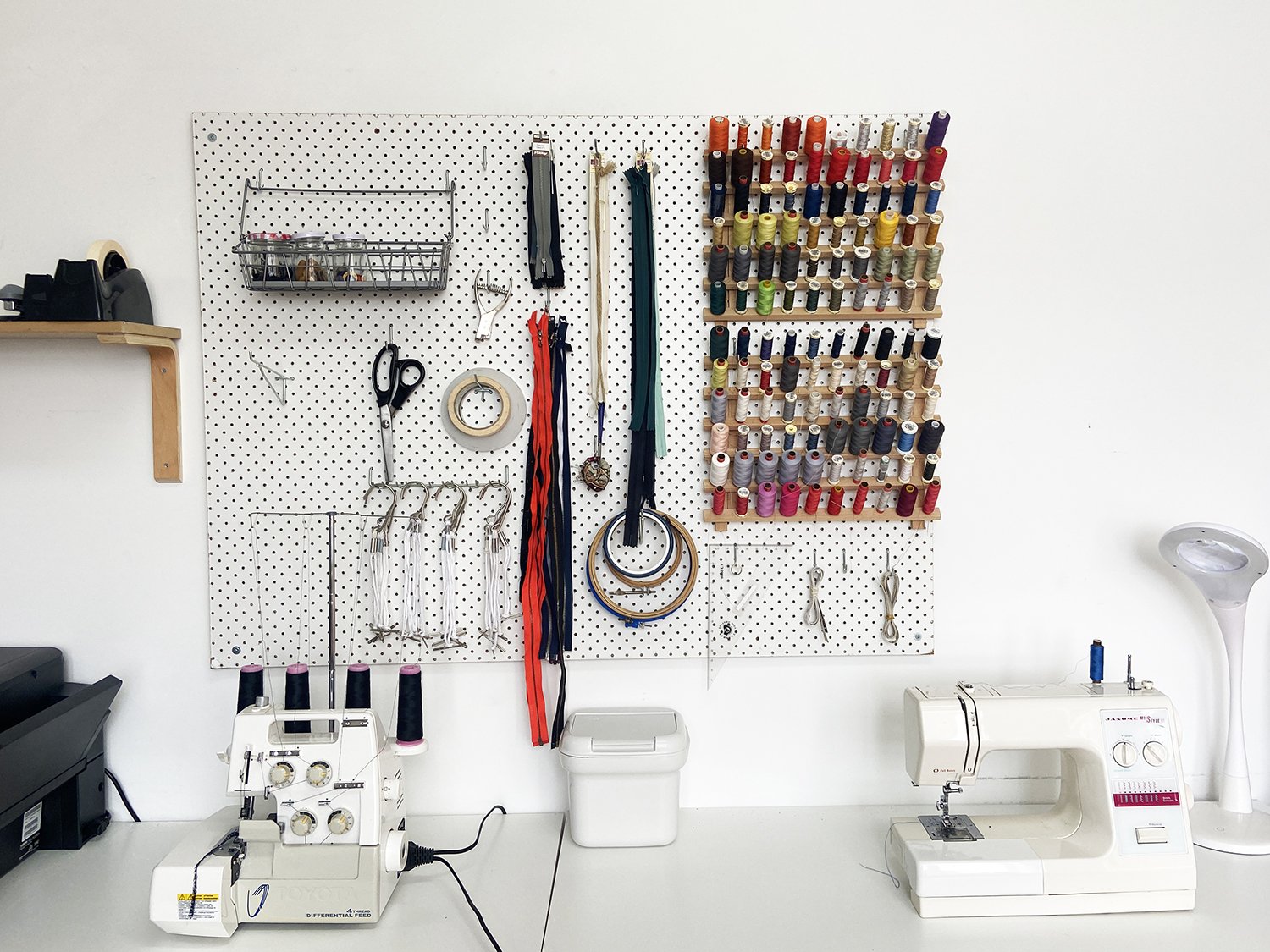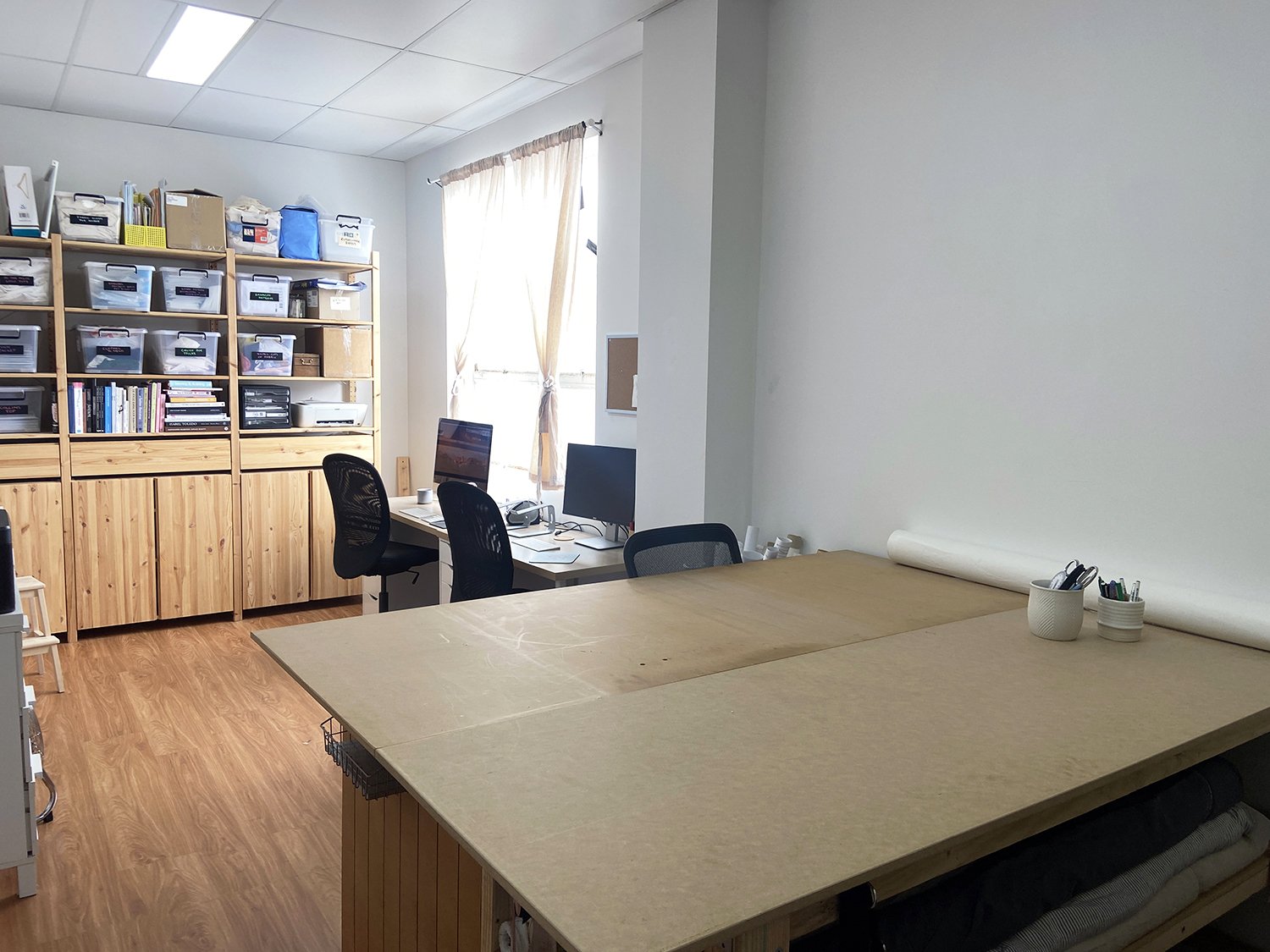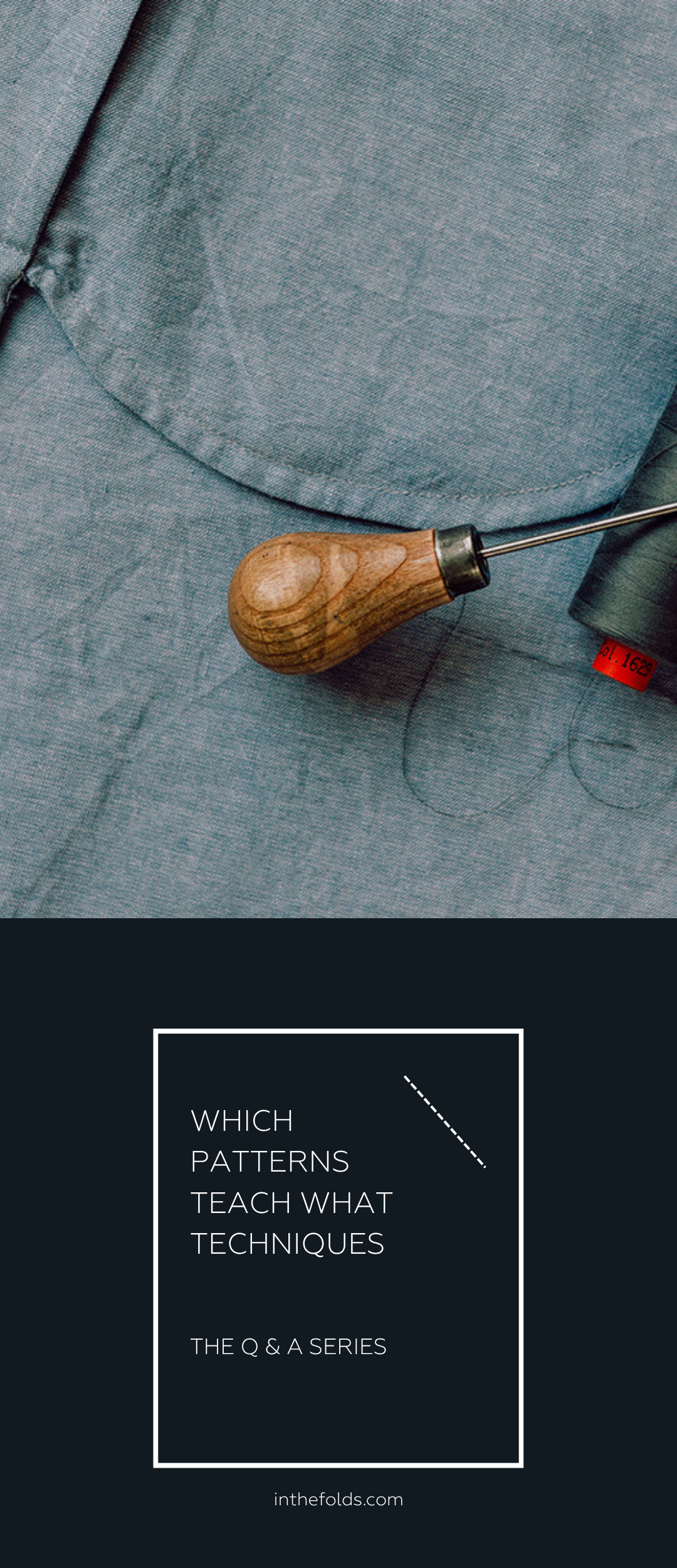THE Q & A SERIES
TIPS FOR CHOOSING A CUTTING TABLE
Morning In the Folds,
I was wondering if you can help me decide on a cutting table.
I have just moved home and for the first time I'm lucky enough to have a space that I can dedicate to a sewing table. I realise in the end it's each to their own and dependant upon the space available but as you must have used a variety of tables over the years I wondered if you could pass on what's great to have and things to avoid.
I've been wondering, would you avoid a folding table, what height would you go for and what surface would you suggest? Also, what is the minimum size top you wouldn't go below (might that be based around the size of a bolt of fabric)? I also figured it would be useful to have a table on casters and ideally be able to walk around it rather than it be up against a wall.
Anyway, knowing what others with more experience have found suitable will really help so thank you in advance if you get time to reply (I know you're always busy).
Kind regards,
Sharon, UK
Hi Sharon,
How exciting that you have space for a cutting table!
This is actually a question I’ve had to consider myself recently. Last year I moved studio spaces and had more space available for a larger cutting table, so I’ve definitely got some thoughts on what to consider.
The focus of this month’s Curated by ITF project, Organise Your Space, also focuses on setting up your sewing space to make it easier to get stuck in and sew, so we’ve been thinking about this a lot!
When designing any space it’s always good to have a clear idea of how you intend to use the space you have, and then come up with a design based on that, so I’ve come up with some questions you might want to consider and answer for your yourself. I’ve included my own thoughts as well.
Will the cutting table be where you put your sewing machine?
Knowing the answer to this before you start out is important because it will impact the height of the table you want to have. It also determines whether or not you can use underneath the table for storage, or if you will need space to slide a stool or chair so you can sit at the table and sew.
You might not be able to answer this question until you’ve answered the question below, so consider these in tandem.
DO you PREFER TO STAND OR SIT when you sew?
With people now focusing on how much they’re moving each day, a lot of creatives are choosing to stand at their machine.
My workbench in my old studio was a comfortable height for standing, but when I used it as a sewing table I used a stool. It worked well, but I know this might not be comfortable for everyone. But, if you think about the time you actually spend sewing when you are making a garment (compared to cutting, pinning and ironing), you might find that you’re sat at your machine a lot less than you think!
Standing to sew might also mean you move between the different stages of garment construction more quickly and efficiently because you don’t have to stand up, move a chair out of the way, relocate to another area, etc.
how high should the cutting table be?
The height your cutting table will really depend on how tall you are.
Choose a height that is comfortable to stand at for long periods of time and doesn’t make you bend down too much. I think somewhere around the top of your hips is normally a good finished height to start with.
HOW WIDE SHOULD THE cutting TABLE BE?
When deciding on the table size you should also consider the patterns and fabric widths you tend to sew with, as it will be much easier to cut larger fabric pieces if you have the support of a table to match.
Off the bolt fabric can go up to 1.5m wide, so start there and work backwards.
If you don’t have the space to accomodate a table that big a 1.2m width would also work as only a small amount of fabric will be hanging off the edge if using larger widths, and most of the time you will be cutting on the fold.
how much sewing space do you have?
How much space you have for your sewing set-up will be a big factor in deciding on what furniture you can use.
If you have the space, I'd suggest having a dedicated cutting table. A large cutting table gives you space to do all the work that requires more room, such as pinning and set-up work, allowing you to have a separate smaller table just for sewing on your machines.
If possible I'd avoid a folding table. They can be great if you don't have the space, but they don't have the stability of a free standing table, which can be frustrating.
A table on casters is a great bonus to have. Being able to move the table out from a wall makes a big difference as you can access all sides which makes cutting a lot easier. It also means that you’re not completely dominating the space with a table and can move it around and out of the way when required. Keep in mind that castors will raise the height of a table.
WHAT TYPE OF SURFACE IS BEST?
I always try to consider longevity and sustainability when I’m setting up a new sewing space. For this reason I like to go with a timber that can take some wear and tear, but a piece can also be easily repaired or replaced later on if need be. A timber surface also means it can be lightly buffed when required.
To help protect your cutting table, large cutting mats are a great addition as they provide a smooth surface that won't catch or snag fabric. I’d highly recommend investing in a cutting mat (or however many you need to cover your table), particularly if you do lots of pattern alterations or use a rotary cutter as they will help prevent damage to the table top and make it last longer.
build or buy?
I love building a cutting table to fit my space because it means I can get the exact size, shape and height I need and want for my space.
There are some great resources online with directions for making one, like this one or this one (which has an interesting approach to the table top surface that I had never seen before!).
What's great about this style of table is that you have a lot of storage room underneath and can even put in a second shelf (depending on the height you go with and what you will be storing underneath).
It can also be handy to put some storage on the side - I have little hanging baskets on the side of mine where I can put a few tools etc. and then a rail where I can hang patternmaking tools.
If building a table is not possible, there are some great IKEA ideas / hacks around - like this one or this one.
I hope that's helpful and gives you some food for thought as you make plans for your new table!
Happy sewing,
Emily
RESOURCES MENTIONED IN THIS ISSUE
The Organise Your Space resource is currently available with a Curated by ITF subscription for the month of January 2023. More information can be found here.
For more issues of the Q & A series, you can check out the archive here.











